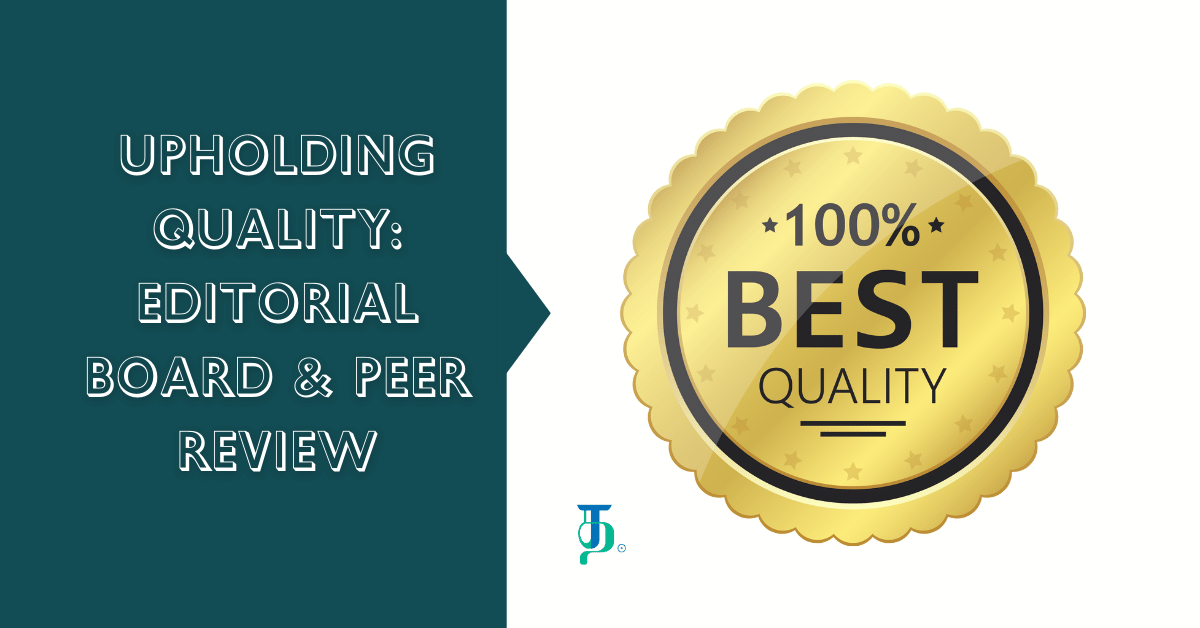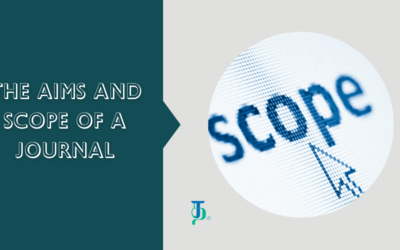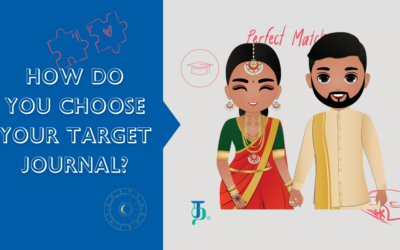By now, upon careful review of the aims and scope of journals, you have shortlisted some journals for further consideration. The next important step is to validate the quality of these journals to further narrow down the list. The editorial board, comprising the Editor-in-chief and other members, and the peer review process followed by the journal are two important criteria that sets the standards of a journal.
The Editorial Board
Similar to the captain and the crew of a ship that navigates the tough seas and help passengers reach the shore safely, the editor-in-chief and the editorial board members together set the direction and the standards for the journals. They not only guide the journal’s policies but also make critical decisions about manuscript acceptance, rejection, or revision based on peer reviews.

A well-constituted editorial board brings together experts from diverse backgrounds and subfields within the discipline, enhancing the journal’s coverage of different perspectives and methodologies. They are responsible for setting and maintaining the rigorous criteria for manuscript acceptance, which includes addressing issues such as plagiarism, data manipulation, and conflicts of interest. Their commitment to these practices improves the trustworthiness of a journal. Their expertise adds a blue ribbon and automatically multiplies your inclination to submit your work to such journals.
As the editor-in-chief and the editorial board is crucial, take the time to review their credentials. Don’t simply rely on the information available on the journal website. There are many other avenues to find more information about them. A prominent place to check their accomplishments is their staff pages on the affiliated institutions. ORCID and ResearcherID provide unique IDs for researchers and thus bring together all the works of a researcher in one place. Google Scholar and ResearchGate are other common places.
ORCID, which stands for Open Researcher and Contributor ID, is a free, unique, persistent identifier (PID) for individuals to use as they engage in research, scholarship, and innovation activities. ORCID is free for researchers in strivitng to achieve its vision that all who participate in research, scholarship, and innovation are uniquely identified and connected to their contributions across disciplines, borders, and time.
ResearcherID is a unique identifier to connect researchers and their publications across the Web of Science (WoS) ecosystem and provides researchers with an index to author information. It helps solve author identity issues, ensure correct attribution between authors and publications on WoS, and add dynamic citation metrics. ResearcherID can link to ORCID to ensure proper credit for an author’s work across the web.
The Peer Review Process
Immediately after you submit your manuscript to an academic journal, the desk editor (a.k.a. editorial assistant) checks whether the manuscript meets the journal’s scope, guidelines, and formatting requirements. If the manuscript meets the initial criteria, it proceeds to the next stage. One or more peer reviewers, or referees, who are external experts in the field, are then selected to evaluate the manuscript. Editors rely on peer reviewers to evaluate manuscripts objectively and make informed decisions regarding publication.

Just as passengers go through a rigorous security check at airports before boarding a flight, a strict peer review process involves thorough examination and evaluation of every aspect of a subject matter. Peer reviewers are gatekeepers of quality and ensure that only the most reliable and trustworthy articles pass through, similar to how only cleared passengers are allowed to proceed to the departure gate.
Peer reviewers are typically researchers or scholars with expertise in the subject matter of the manuscript. They assess the manuscript’s quality, originality, methodology, significance, and contribution to the field. They evaluate the clarity of writing, validity of research methods, appropriateness of data analysis, interpretation of results, and relevance of conclusions. Reviewers also check for ethical concerns, conflicts of interest, or plagiarism.
While the peer review can be single blind, double blind, or triple blind, the most common mode is double-blinded peer review, in which the authors and reviewers do not know the identity of each other.
Based on the feedback from peer reviewers, the editor makes an editorial decision regarding the manuscript. The decision can be one of the following:
- Acceptance: Your manuscript has been accepted for publication without revisions or with only minor revisions.
- Revision: Your manuscript needs revisions based on the reviewers’ feedback before it can be accepted for publication.
- Rejection: Your manuscript is rejected for publication due to significant flaws, lack of novelty, or failure to meet the journal’s standards.
Do you know that one of the most common reasons for rejection of an article at this stage is poor quality language and poor presentation of the manuscript? Tholga can help you overcome this common problem by polishing the language of your paper and enhancing its presentation.
If your manuscript requires revisions, peer reviewers provide valuable feedback and constructive criticism to improve your manuscript. They offer insights, suggestions, and recommendations for strengthening the research design, clarifying arguments, addressing limitations, and enhancing the overall quality of the work. You can use this feedback to refine your research and enhance its impact.
You need to revise the manuscript based on the reviewers’ comments and submit the revised version to the journal. The revised manuscript will undergo another round of peer review or editorial evaluation, this time focussing on the revisions. If accepted, your manuscript moves forward to the production stage, where it undergoes copyediting, typesetting, and proofreading before being published in the journal.
Peer review is a stamp of approval and serves as a validation mechanism for research findings. By undergoing rigorous evaluation by independent experts, the published research gains credibility and trust within the academic community. Peer-reviewed publications are considered more reliable sources of information compared to non-peer-reviewed sources. A rigorous review process adds credibility to your work.
A most important factor that differentiates a genuine journal from predatory journals is the peer review process. Predatory journals either don’t have this process or they just do not do it at all.
Remember to check the average time it takes for the journal to complete the review and publication process. Overall, the entire peer review process, from initial submission to final publication, can take anywhere from a few weeks to over a year. However, it’s important to note that these are general estimates, and the actual time required can vary widely depending on the specific circumstances and policies of the journal. Longer wait times can be incredibly painful, but if your article is well-written and fits very well into the scope and status of the journal, then it may get revised faster.
By now, you are well-equipped to make an informed decision about the editorial and peer review process. Carefully review the journal’s website or author guidelines to understand its policies and procedures regarding editorial board and peer review and use them to your advantage.




